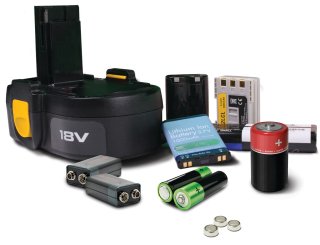Battery Collection Best Practices

On this page:
- Background
- Activities and Input Collected
- Working Session Overview
- Past Working Sessions
- Collection Best Practices
- How to Get Involved
Background
When batteries are discarded improperly, such as in household trash or curbside recycling, critical materials inside batteries are lost and cannot be recycled into new batteries. Batteries can also start fires throughout the municipal waste management system, causing air pollution issues in communities and threatening the safety of workers and first responders.
The Infrastructure Investment and Jobs Act requires EPA to develop battery collection best practices and battery labeling guidelines. Congress allocated $10 million and $15 million respectively to the Agency to complete these tasks by September 30, 2026.
Activities and Input Collected
In June and July 2022, EPA conducted widespread outreach to learn about the current state of battery recycling efforts around the United States. EPA hosted a series of virtual feedback sessions and issued a request for information to seek input on all battery chemistries (e.g., lithium-based and nickel-metal hydride) and all battery types (e.g., small format primary or single-use and rechargeable batteries; mid-format; large format vehicle batteries, including electric vehicles; and industrial batteries used in manufacturing, commercial businesses, and healthcare operations). More than 780 unique participants attended the feedback sessions, and 59 people and organizations submitted responses to the RFI.
Working Session Overview
The working sessions for developing battery collection best practices and voluntary labeling guidelines had distinct but related conversation tracks, organized by battery type, in 2024–2025. Each track will included a series of working sessions. While participation will vary between each track, there may be individuals or organizations that can contribute to more than one. These conversation tracks are illustrated and described in more detail below.
| What is the battery type? | Path 1a: Small format –Consumer Electric and Portable Batteries | Path 1b: Small format –Consumer Electric and Portable Batteries | Path 2: Mid-format | Path 3: Large format batteries |
|---|---|---|---|---|
| What is the focus area? | Labeling | Collection | Labeling and collection | Labeling and collection |
| When will these conversations occur? | 2024 | 2024 | 2024/2025 | 2025 |
| What’s included? | These sessions will address labeling of primary batteries under 4.4 pounds and rechargeable batteries under 11 pounds including removable and embedded batteries in electronics and electric devices. | These sessions will focus on how to best collect primary batteries under 4.4 pounds and rechargeable batteries under 11 pounds including removable and embedded batteries in electronics and electric devices. | These sessions will focus on how to label and collect mid-format batteries, which are rechargeable batteries between 11 and 25 pounds or 300 to 2000 watt-hour ratings. This includes e-bikes, e-scooters, portable power stations, and outdoor power equipment. | These sessions will focus on how to label and collect large format batteries over 25 pounds in vehicles. This includes electric, hybrid, and commercial vehicles, other motive power batteries, and batteries used in energy storage and industrial settings such as backup power, medical equipment, grid, off-grid, micro-grid, and data centers. |
| Who should participate? |
|
|
|
|
Past Working Sessions
Collection Best Practices
EPA is currently developing a Report to Congress on the best practices for collection of batteries to be recycled. This report will identify existing best practices, describe the current state of battery collection, and lay out EPA’s next steps.
EPA is hosting a series of working sessions to inform the development of best practices for state, Tribal, and local governments to collect end-of-life batteries for recycling. As specified in the Infrastructure Investment and Jobs Act , the best practices must:
- Be technically and economically feasible for state, Tribal and local governments.
- Be environmentally sound and safe for waste management workers.
- Optimize the value and use of material derived from the recycling of batteries.
EPA aims to develop collection best practices that cover a wide array of small, medium (or mid-), and large format battery chemistries (lithium-ion, nickel-cadmium, etc.) and uses (consumer products, e-scooters, electric vehicles, industrial storage). The collection best practices will identify best practices for communication and outreach, collection locations, transportation, measuring progress, and other important elements.
The series of meetings focused on collection of small format consumer electric and portable batteries and battery-containing products. Conversations about collection related to mid-format and large format batteries used in vehicles, energy storage, and industrial setting will be combined with discussions about labeling.
How to Get Involved
If you are interested in participating in future meetings, please provide your information on this web form.
We Want to Hear from Island Communities
If you are part of an island community, EPA welcomes your input. Future engagement opportunities will explore the unique challenges island communities face related to battery collection, storage, and transport; how federal programs influence current practices; and opportunities for further action. If you are interested in participating in these meetings, or if you would like to share your experiences with battery collection, storage, or recycling, please provide your information on this web form.
